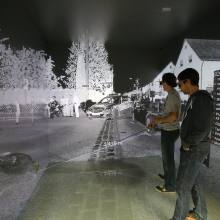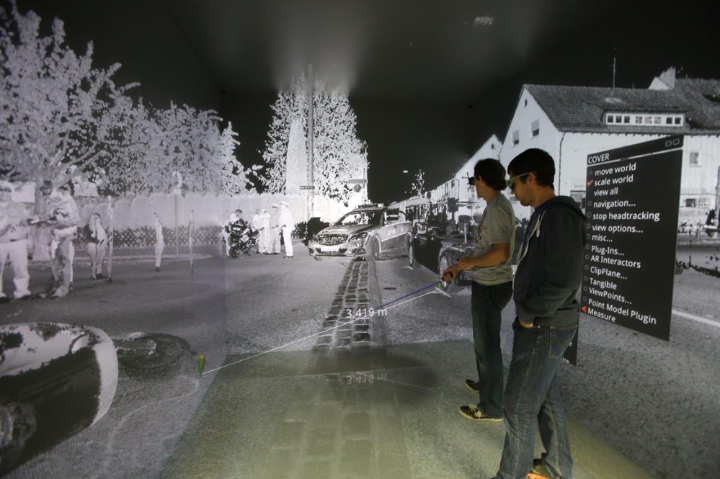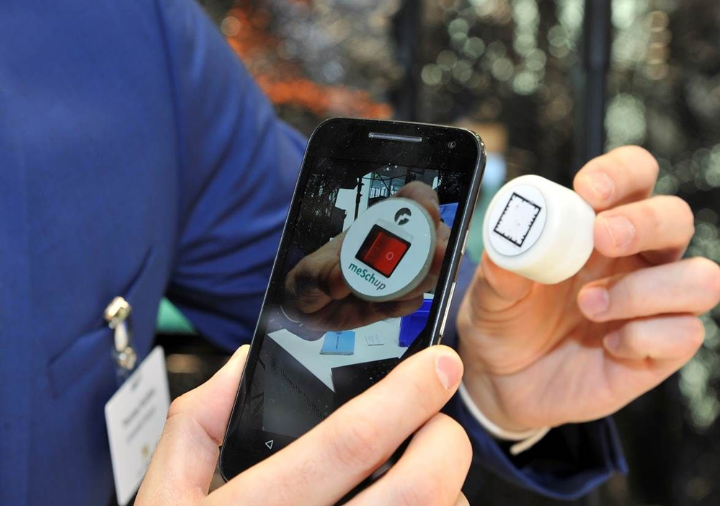This year the University of Stuttgart will also be represented with an exhibition stand at the CeBIT, the world’s most important leading trade fair for digital technologies. As a co-exhibitor at the “Baden-Württemberg Joint Stand“ the University will be showing international exhibition visitors attractive exhibits from cutting-edge scientific research from 20th until 24th March in Hall 6 (Stand B30). With a view to the trade fair commitment in Hanover, Professor Wolfram Ressel, Rector of the University of Stuttgart, stresses the necessity of transferring findings from university research to industrial innovations in a timely manner.
At the opening of the CeBIT 2017, Professor Ressel said: “In order to be able to facilitate our industrial partners access to our research achievements as efficiently as possible, we as a research institute of international ranking have strategically repositioned and intensified our activities in the field of knowledge and technology transfer.“
Together with its partner exhibitors at the joint stand, the University of Stuttgart has met with active interest from politiics. As early as the first trade fair day (20th March) the State Premier Winfried Kretschmann, Federal Minister for Education and Research Johanna Wanka and Baden-Württemberg’s Economics Minister Nicole Hoffmeister-Kraut announced they would be visiting the state stand. In the course of political talks, the University of Stuttgart will be giving exhibit presentations from the excellence cluster SimTech for simulation technology (project “meSchup“) and the high-performance computer centre (augmented reality in vehicle development and safety research).
Highlights of the exhibition appearance
Blickshift Analytics
The University of Stuttgart will be presenting Blickshift at the fair, among others. This start-up was founded by three research assistants together with their doctoral supervisor at the Institute for Visualisation and Interactive Systems in order to combine research results from visualisation with questions of automated driving. With its big-data-analysis software “Blickshift Analytics“, the automobile industry is able to analyse for the first time the behaviour of car drivers with a great level of detail at a very low cost. This analysis provides an essential contribution to the development of reliable driving assistance systems and automated driving.
Blickshift is a very good example of how the Stuttgart approach is transferring new results from science to industry in order to make an important contribution to one of the biggest promises of the 21st century.
High-performance computing: augmented reality in vehicle development and safety research
Today the development of complex machines, systems and vehicles without numeric simulations is inconceivable. Only through the optimisations made possible through this can the required efficiency and quality be realised. At this year’s CeBIT it will be demonstrated how a calculated flow field can be interactively visualised with pressing, speeds and other parameters with the aid of augmented reality directly on the actual object.
Another new aspect is also the application of augmented reality in accident reconstruction. Results from FEM crash simulations increase accuracy when reconstructing an accident. They can also be visualised directly on the actual vehicle for simpler evaluation. In this way the accident progression can be made comprehensible with the approach, the collision, the forces and deformations of the vehicles from various perspectives. Moreover, the scene can be enhanced by virtual objects, such as 3D scans of other vehicles or the surroundings. The road, signposting, road markings and road boundaries are thereby described in a parameterised way, creating a complete image of the scene of the accident with accident sequence. The Stuttgart High-performance Computer Centre (HLRS) is the first federal high-performance computer centre in Germany. The HLRS pursues the approach of promoting innovative architectural concepts and program methods together with partners from research and industry in order to support its customers and users with new concepts, own tools and prototypical implementations.
Modelling and simulation technology: “meSchup“ platform
The University of Stuttgart will be presenting an innovative technology platform for the Internet of Things, which was developed in the last four years in the framework of a European project. Building on a new generation of intelligent hubs, the “meSchup“ platform enables technology-independent smart applications for home, office and industrial environments to be developed and operated. These "Smart Space Apps" are not performed on smart phones but in the environment and enable the smooth and safe interworking between devices of the most diverse kind of communication technologies, device platforms and manufacturers.
The technology spin-off meSchup that is currently being developed offers manufacturers of hardware and providers of IoT and smart home solution the use of this technology in an OEM model, thus enabling a multitude of quicker product developments and market launches of innovative smart products. Various innovative application examples will be presented such as, e.g. the control of interlinked home devices via Augmented Reality interfaces of the use of windows as “see-through displays”.
The SimTech Excellence Cluster for simulation technology at the University of Stuttgart is a cluster for the efficient and comprehensive further development of scientific methods and applications in all fields of modelling and simulation sciences.




